The Air Source Truck is a vital piece of equipment in the complex ecosystem of aircraft ground operations, providing a steady and reliable supply of compressed air to aircraft when they are on the ground. Without the Air Source Truck, many critical pre-flight and post-flight procedures would be disrupted, leading to delays, increased operational costs, and potential safety risks.
Aircraft rely on a variety of systems that require compressed air to function properly, especially when their engines are not running. From starting the engines to powering environmental control systems, the need for a consistent air supply is paramount. The Air Source Truck steps in to meet this need, ensuring that ground crews can perform their tasks efficiently and safely. In this comprehensive blog post, we will explore the many facets of the Air Source Truck, including its design, functionality, importance in ground operations, maintenance requirements, and future trends.
The Role of Air Source Truck in Aircraft Ground Operations
Aircraft ground operations are a intricate dance of various tasks and equipment, all working together to ensure that flights depart and arrive on time. The Air Source Truck plays a crucial role in this process, providing compressed air for a wide range of applications. One of the primary functions of the Air Source Truck is to supply air for engine starting. When an aircraft is on the ground, its engines are typically shut down, and starting them requires a burst of high-pressure air. The Air Source Truck delivers this air, which is directed into the aircraft's engine starters, enabling them to spin the engines up to the necessary speed for ignition.
In addition to engine starting, the Air Source Truck is used to power the aircraft's environmental control systems (ECS) while it is on the ground. The ECS is responsible for maintaining a comfortable and safe environment inside the cabin, including regulating temperature, humidity, and air quality. Without a reliable air supply from the Air Source Truck, the ECS would not function, making the cabin uncomfortable for passengers and crew and potentially causing issues with equipment that relies on proper environmental conditions.
The Air Source Truck also supports other critical systems, such as the aircraft's pneumatic systems. These systems use compressed air to operate various components, including brakes, flaps, and landing gear. By providing a steady supply of compressed air, the Air Source Truck ensures that these systems can be tested and maintained while the aircraft is on the ground, helping to identify any potential issues before the aircraft takes off.
Another important role of the Air Source Truck is in supporting maintenance and repair work. Ground crews often need compressed air to clean parts, power tools, and perform other maintenance tasks. The Air Source Truck provides a convenient and reliable source of this air, eliminating the need for cumbersome and less efficient portable compressors.
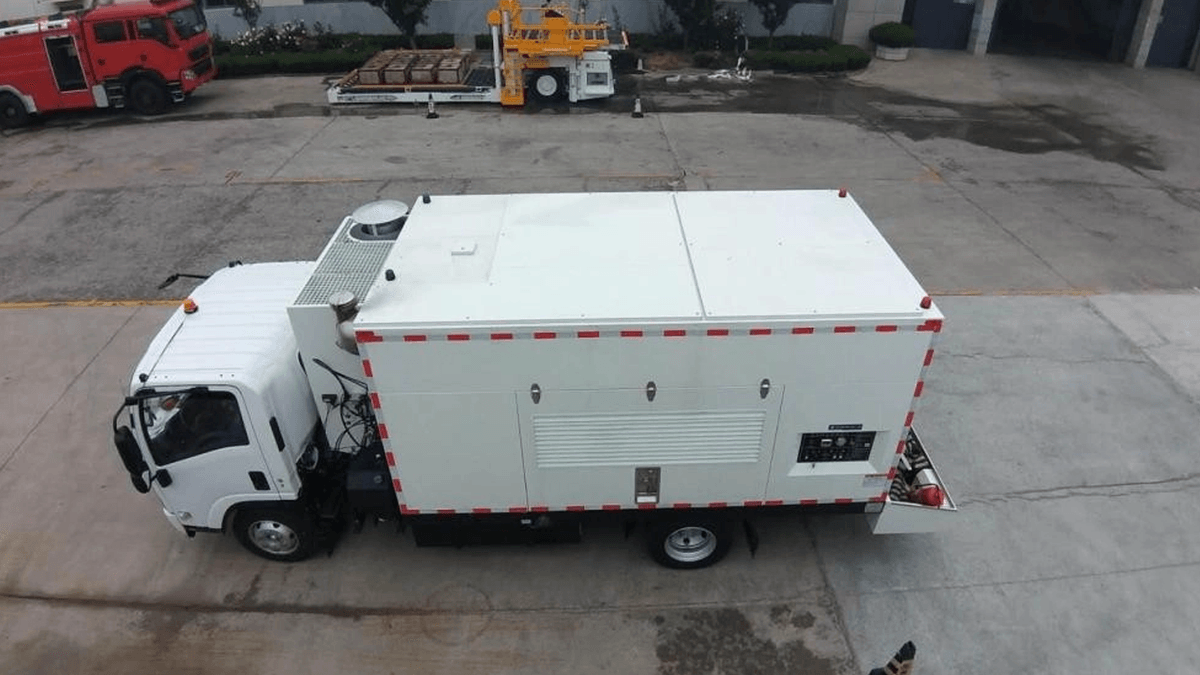
Design and Components of Air Source Truck
The Air Source Truck is a specialized vehicle designed to generate, store, and deliver compressed air at the required pressure and flow rates for aircraft operations. Its design is the result of careful engineering to meet the specific needs of the aviation industry, including safety, reliability, and efficiency.
At the heart of the Air Source Truck is the compressor system. This system is responsible for taking in ambient air, compressing it to the required pressure, and delivering it to the aircraft. The compressor can be powered by a diesel engine, a gasoline engine, or an electric motor, depending on the model and the specific requirements of the operation. Diesel engines are commonly used in Air Source Trucks due to their high torque and fuel efficiency, which make them well-suited for heavy-duty applications.
The compressed air generated by the compressor is stored in high-pressure tanks located on the Air Source Truck. These tanks are designed to withstand the high pressures of compressed air, typically ranging from 3,000 to 5,000 pounds per square inch (psi). The size of the tanks varies depending on the capacity of the Air Source Truck, with larger trucks able to store more compressed air to support multiple aircraft or longer operations.
To ensure that the compressed air delivered to the aircraft is clean and dry, the Air Source Truck is equipped with a series of filters and dryers. Compressed air can contain moisture, oil, and other contaminants that can damage aircraft systems, so these components are essential for maintaining the integrity of the air supply. The filters remove particles and debris, while the dryers remove moisture, ensuring that the air delivered to the aircraft is of the highest quality.
The Air Source Truck also features a delivery system that includes hoses, valves, and connectors designed to interface with the aircraft's air intake ports. These components are built to strict aviation standards to ensure a secure and leak-free connection, preventing air loss and ensuring that the air is delivered at the correct pressure and flow rate. The delivery hoses are typically made from durable materials that can withstand the high pressures and harsh environmental conditions of airport operations.
Other important components of the Air Source Truck include a control system that allows operators to monitor and adjust the pressure and flow rate of the compressed air, as well as safety features such as pressure relief valves, which prevent the system from exceeding safe pressure levels. Some Air Source Trucks also include a generator to power auxiliary equipment, such as lights or tools, making them more versatile and useful in a variety of ground operations.
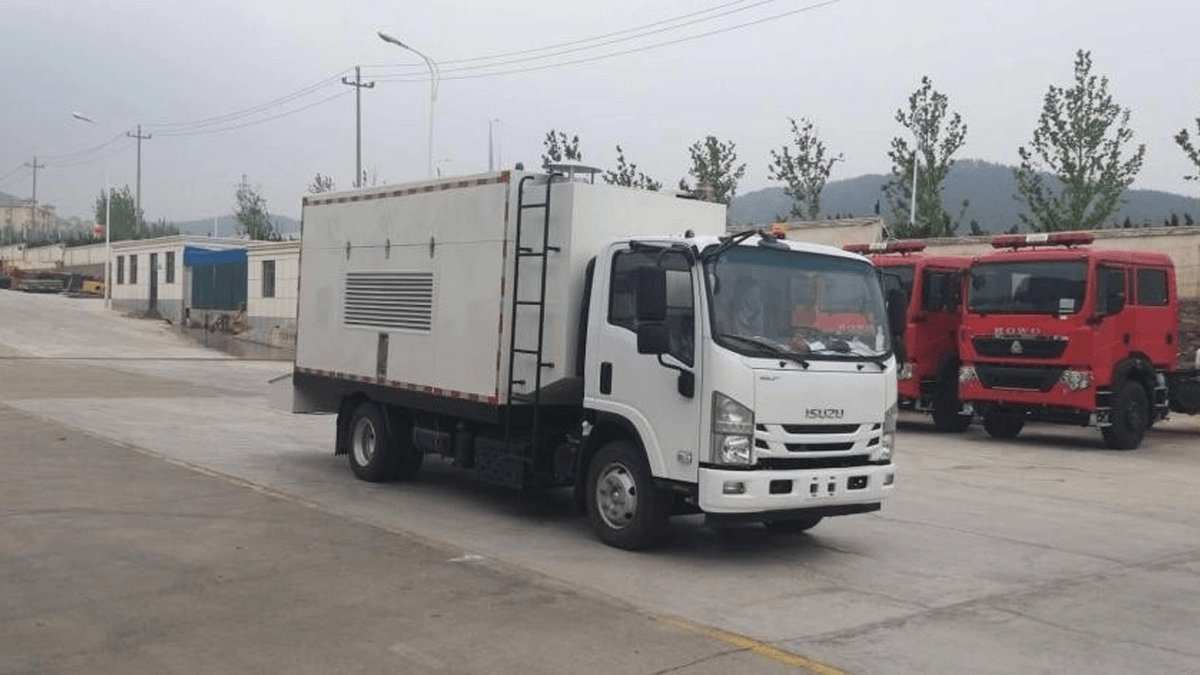
Types of Air Source Trucks
There are several different types of Air Source Trucks available, each designed to meet specific needs and applications in aircraft ground operations. The type of Air Source Truck chosen depends on factors such as the size and type of aircraft being serviced, the required pressure and flow rate, and the operating environment.
One common type of Air Source Truck is the mobile air starter unit. These units are designed specifically for starting aircraft engines and are typically smaller and more maneuverable than other types of Air Source Trucks. They are often used for smaller aircraft, such as regional jets and turboprops, which require lower air flow rates for engine starting. Mobile air starter units are usually mounted on a trailer or a small truck, making them easy to move around the airport tarmac.
Another type of Air Source Truck is the high-pressure air supply truck. These trucks are designed to deliver compressed air at higher pressures, typically up to 5,000 psi, and are used for larger aircraft, such as wide-body jets. They are capable of supplying air for both engine starting and powering environmental control systems, making them versatile and suitable for a wide range of applications. High-pressure air supply trucks are often larger and more powerful than mobile air starter units, with larger compressors and storage tanks to meet the higher demands of larger aircraft.
Electric air source trucks are becoming increasingly popular as airports and airlines look to reduce their carbon footprint and operating costs. These trucks are powered by electric motors, which produce zero emissions and are quieter than diesel or gasoline-powered units. Electric air source trucks are well-suited for use in noise-sensitive areas and are ideal for airports that are striving to meet environmental regulations and sustainability goals. They can be charged using renewable energy sources, such as solar or wind power, further reducing their environmental impact.
Towable air source units are another option, especially for operations that require flexibility and mobility. These units are mounted on a trailer that can be towed by a truck or other vehicle, making them easy to transport to different locations on the airport tarmac. Towable air source units are often used for temporary or emergency situations, such as when a permanent Air Source Truck is out of service or when additional air supply is needed during peak periods.
Key Features to Consider When Choosing an Air Source Truck
Choosing the right Air Source Truck is essential for ensuring efficient and reliable aircraft ground operations. There are several key features to consider when selecting an Air Source Truck, including:
- Pressure and flow rate: The Air Source Truck must be able to deliver compressed air at the pressure and flow rate required by the aircraft being serviced. Different aircraft have different requirements, so it is important to choose an Air Source Truck that can meet the specific needs of the fleet.
- Capacity: The capacity of the Air Source Truck, measured by the size of the storage tanks, determines how much compressed air it can store. A larger capacity is beneficial for operations that require servicing multiple aircraft or for longer periods of time without refueling or recharging.
- Power source: The power source of the Air Source Truck (diesel, gasoline, electric) is an important consideration, as it affects fuel efficiency, emissions, and operating costs. Electric Air Source Trucks are becoming more popular for their environmental benefits, while diesel-powered units are still preferred for their power and durability in heavy-duty applications.
- Mobility and maneuverability: The Air Source Truck must be able to navigate the airport tarmac easily, including tight spaces and around other aircraft and equipment. Smaller, more maneuverable units are better suited for busy airports with limited space, while larger units may be necessary for servicing larger aircraft.
- Safety features: Safety is paramount in aviation operations, so the Air Source Truck should be equipped with a range of safety features, such as pressure relief valves, emergency shutdown systems, and fire suppression systems. These features help to prevent accidents and ensure the safety of ground crews and aircraft.
- Reliability and durability: The Air Source Truck must be able to withstand the harsh conditions of airport operations, including extreme temperatures, dust, and vibration. Choosing a unit from a reputable manufacturer with a proven track record of reliability and durability is essential for minimizing downtime and ensuring long-term performance.
- Ease of maintenance: Regular maintenance is necessary to keep the Air Source Truck in good working order, so it is important to choose a unit that is easy to maintain. Features such as accessible components, clear maintenance instructions, and a reliable supply of spare parts can help to reduce maintenance costs and downtime.
Importance of Reliable Air Supply in Aircraft Ground Operations
A reliable air supply is essential for the smooth and safe operation of aircraft on the ground. The Air Source Truck plays a critical role in ensuring this reliability, as any disruption in the air supply can have serious consequences for flight schedules, passenger safety, and operational efficiency.
One of the main reasons why reliable air supply is important is for engine starting. If the Air Source Truck fails to deliver the required air pressure or flow rate, the aircraft's engines may not start properly, leading to delays. In some cases, repeated attempts to start the engines can cause damage to the starters or other components, resulting in costly repairs and further delays. A reliable Air Source Truck ensures that engines start quickly and efficiently, minimizing the risk of delays and reducing operational costs.
Reliable air supply is also essential for the proper functioning of the aircraft's environmental control systems. Without a steady supply of compressed air, the ECS cannot maintain the correct temperature and humidity in the cabin, which can be uncomfortable for passengers and crew. In extreme cases, it can also lead to issues with equipment such as avionics, which are sensitive to temperature and humidity changes. The Air Source Truck ensures that the ECS has the air it needs to function properly, creating a safe and comfortable environment for everyone on board.
In addition to engine starting and ECS operation, reliable air supply is necessary for testing and maintaining the aircraft's pneumatic systems. Ground crews use compressed air to test the brakes, flaps, and landing gear, ensuring that they are in good working order before the aircraft takes off. A reliable Air Source Truck provides the consistent air pressure needed for these tests, helping to identify any potential issues and ensuring that the aircraft is safe to fly.
Reliable air supply also contributes to overall operational efficiency. When the Air Source Truck is working properly, ground crews can perform their tasks more quickly and efficiently, reducing the time the aircraft spends on the ground. This, in turn, helps to keep flight schedules on track and reduces the risk of delays, which can have a ripple effect throughout the entire airport system.
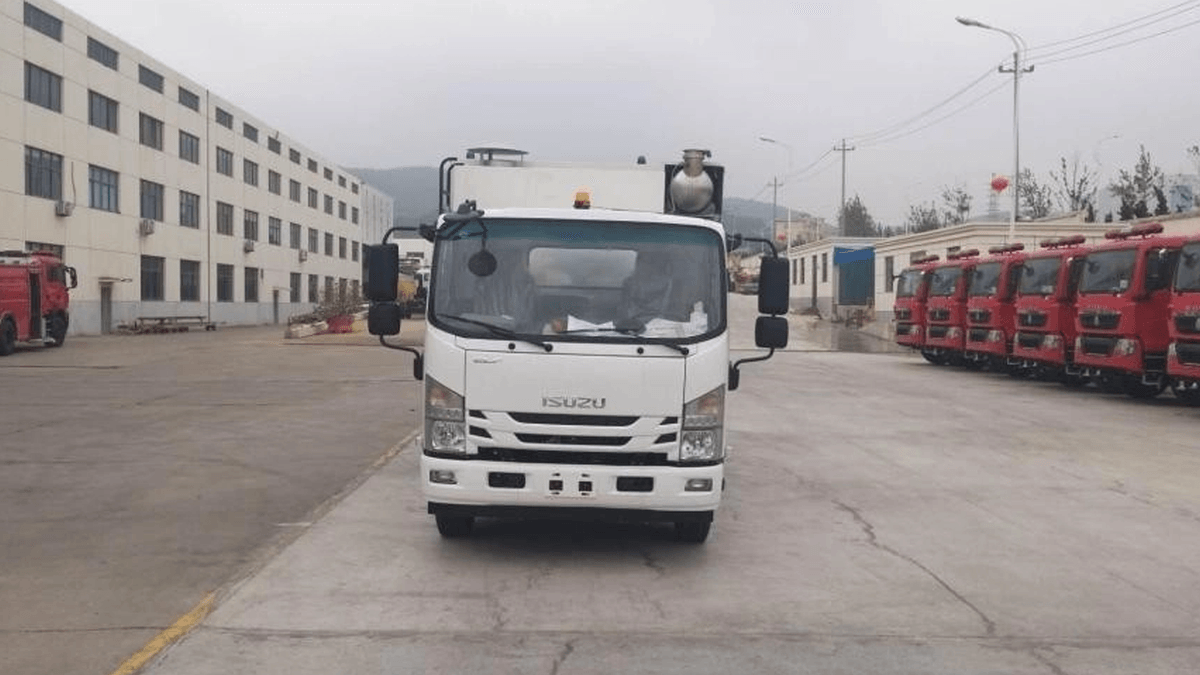
Maintenance and Servicing of Air Source Truck
Proper maintenance and servicing are essential for ensuring the reliability and longevity of the Air Source Truck. Regular maintenance helps to identify and address potential issues before they become major problems, reducing downtime and ensuring that the Air Source Truck is always ready to perform when needed.
One of the most important aspects of Air Source Truck maintenance is regular inspections. This includes checking the compressor, storage tanks, filters, dryers, hoses, and other components for signs of wear, damage, or leaks. Inspections should be performed on a scheduled basis, such as daily, weekly, or monthly, depending on the frequency of use and the operating conditions. During inspections, operators should look for cracks, corrosion, loose connections, and other issues that could affect the performance of the Air Source Truck.
Filter replacement is another key maintenance task. The filters in the Air Source Truck's air treatment system can become clogged with dirt, dust, and other contaminants over time, reducing their effectiveness and potentially allowing contaminants to enter the aircraft's systems. Filters should be replaced regularly according to the manufacturer's recommendations, or more frequently if the Air Source Truck is operating in a particularly dirty or dusty environment.
The compressor is the heart of the Air Source Truck, so proper maintenance of the compressor is essential. This includes checking the oil level and quality, inspecting the belts and pulleys for wear, and cleaning the cooling system. The compressor should also be serviced by a qualified technician at regular intervals, which may include replacing worn parts, adjusting valves, and performing other repairs as needed.
The storage tanks of the Air Source Truck must also be inspected and tested regularly to ensure that they can withstand the high pressures of compressed air. This includes visual inspections for corrosion and damage, as well as hydrostatic testing to check for leaks and structural integrity. Hydrostatic testing is typically performed every few years, depending on the type of tank and the regulations in the region.
The delivery hoses and connectors are also subject to wear and tear, so they should be inspected regularly for cracks, cuts, and other damage. Hoses that are damaged should be replaced immediately to prevent air leaks and ensure a secure connection to the aircraft. It is also important to ensure that the connectors are clean and free from debris, as this can affect the quality of the air supply.
In addition to regular maintenance, the Air Source Truck should be serviced by a qualified technician whenever a problem is detected. This may include repairing or replacing components, adjusting the pressure and flow rate, or performing other repairs as needed. Keeping detailed records of all maintenance and servicing activities is also important, as it helps to track the performance of the Air Source Truck over time and identify any trends or recurring issues.
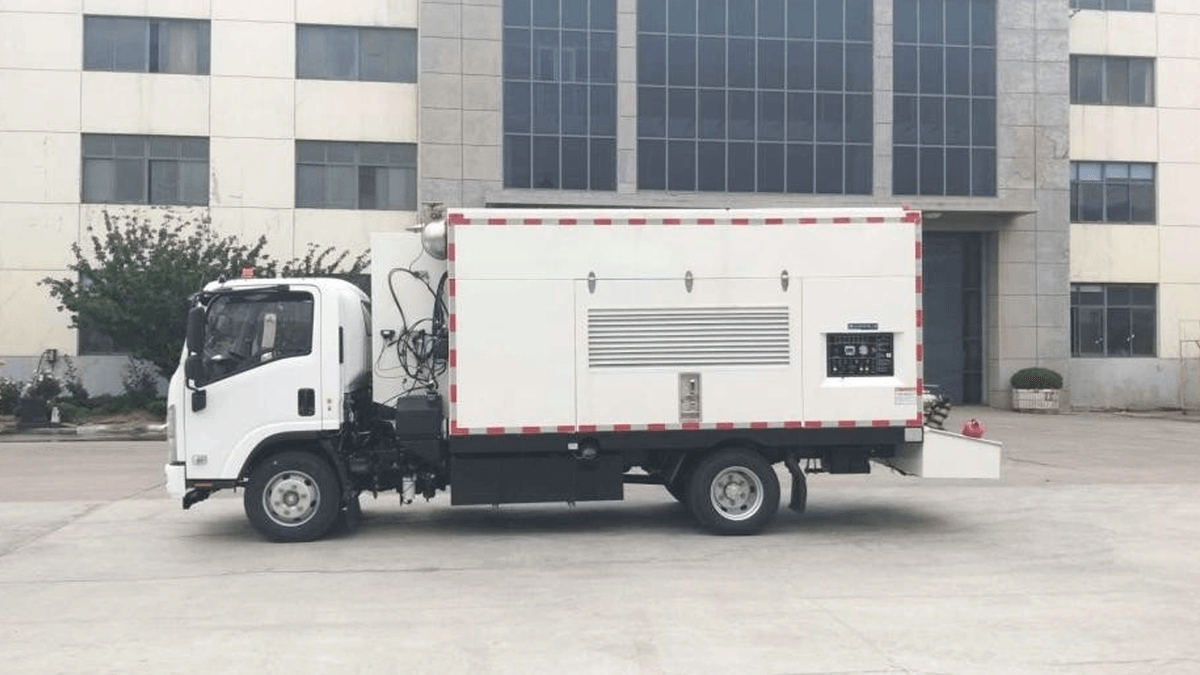
Safety Considerations for Air Source Truck Operations
Safety is of utmost importance when operating an Air Source Truck, as the high-pressure air and complex systems can pose significant risks to ground crews and aircraft if not handled properly. There are several key safety considerations to keep in mind when operating an Air Source Truck, including:
- Proper training: All operators of the Air Source Truck must receive proper training on its operation, maintenance, and safety procedures. This includes training on how to connect and disconnect the hoses from the aircraft, how to monitor and adjust the pressure and flow rate, and how to respond to emergencies such as air leaks or equipment failures. Training should be provided by qualified instructors and should include both classroom instruction and hands-on practice.
- Personal protective equipment (PPE): Operators of the Air Source Truck must wear appropriate PPE, such as safety glasses, gloves, and steel-toed boots, to protect themselves from potential hazards. PPE can help to prevent injuries from flying debris, high-pressure air leaks, or contact with hot or cold components.
- Proper connection and disconnection: When connecting the Air Source Truck to the aircraft, it is important to ensure that the hoses are properly aligned and secured to prevent leaks. Operators should follow the manufacturer's instructions for connecting and disconnecting the hoses, and should never force a connection or disconnect a hose while the system is under pressure.
- Pressure monitoring: Operators must constantly monitor the pressure and flow rate of the compressed air to ensure that they are within the safe operating range. Exceeding the recommended pressure levels can cause damage to the aircraft's systems or the Air Source Truck itself, while insufficient pressure can result in poor performance.
- Emergency shutdown procedures: The Air Source Truck should be equipped with emergency shutdown systems that allow operators to quickly stop the compressor and release pressure in the event of an emergency. Operators should be familiar with these procedures and should practice them regularly to ensure that they can respond quickly in a crisis.
- Fire safety: The Air Source Truck should be equipped with fire suppression systems, such as fire extinguishers, to handle any potential fires. Operators should be trained on how to use these systems and should know the location of fire alarms and emergency exits in the area where the Air Source Truck is operating.
- Weather conditions: Operating the Air Source Truck in extreme weather conditions, such as high winds, rain, or snow, can pose additional risks. Operators should take appropriate precautions, such as securing the Air Source Truck and hoses, to prevent accidents and ensure the safety of the equipment and personnel.
Common Challenges in Air Source Truck Operations
Despite their importance, Air Source Trucks can face a number of challenges in their day-to-day operations. These challenges can affect their reliability, efficiency, and safety, and must be addressed to ensure smooth aircraft ground operations.
One common challenge is equipment breakdowns. The Air Source Truck is a complex piece of equipment with many moving parts, and breakdowns can occur due to wear and tear, lack of maintenance, or environmental factors. Breakdowns can lead to delays in aircraft ground operations, as the Air Source Truck may not be able to supply the required air. To address this challenge, regular maintenance and inspections are essential, as well as having backup Air Source Trucks available to cover any unexpected breakdowns.
Another challenge is inconsistent air pressure or flow rate. This can be caused by a variety of factors, including a dirty filter, a leak in the system, or a problem with the compressor. Inconsistent air pressure can affect engine starting and the performance of the aircraft's systems, leading to delays and potential safety risks. To prevent this, operators must monitor the pressure and flow rate closely and perform regular maintenance on the Air Source Truck's components.
Environmental factors can also pose challenges for Air Source Truck operations. Extreme temperatures, both hot and cold, can affect the performance of the compressor and other components. In hot weather, the compressor may overheat, while in cold weather, the hoses and valves may freeze, causing blockages. Dust, dirt, and moisture can also damage the Air Source Truck's systems, leading to breakdowns and reduced performance. To address these challenges, Air Source Trucks should be designed to withstand harsh environmental conditions, and operators should take appropriate precautions, such as cleaning the equipment regularly and storing it in a protected area when not in use.
Lack of trained operators is another challenge that can affect Air Source Truck operations. Operating an Air Source Truck requires specialized knowledge and skills, and untrained operators may not be able to handle the equipment properly, leading to accidents, equipment damage, and delays. To address this, airlines and airports should invest in training programs to ensure that there are enough qualified operators available to handle the Air Source Truck fleet.
Regulatory compliance is an ongoing challenge for Air Source Truck operators. The aviation industry is subject to strict regulations and standards, and Air Source Trucks must comply with a range of requirements related to safety, emissions, and performance. Keeping up with changes in regulations can be difficult, especially for operators with fleets of Air Source Trucks. To address this challenge, operators should stay informed about regulatory updates, work with manufacturers and industry associations to understand the requirements, and ensure that their Air Source Trucks are regularly inspected and certified to meet the latest standards.
Cost management is another challenge for Air Source Truck operations. The purchase, maintenance, and operation of Air Source Trucks can be expensive, and operators must find ways to manage these costs while ensuring reliable performance. This includes choosing the right Air Source Truck for the operation, negotiating favorable maintenance contracts, and optimizing fuel or energy usage. Investing in fuel-efficient or electric Air Source Trucks can also help to reduce operating costs over time, despite the higher initial investment.
Strategies to Overcome Air Source Truck Operational Challenges
Addressing the challenges faced by Air Source Truck operations requires a proactive and strategic approach. Here are some effective strategies to overcome these challenges:
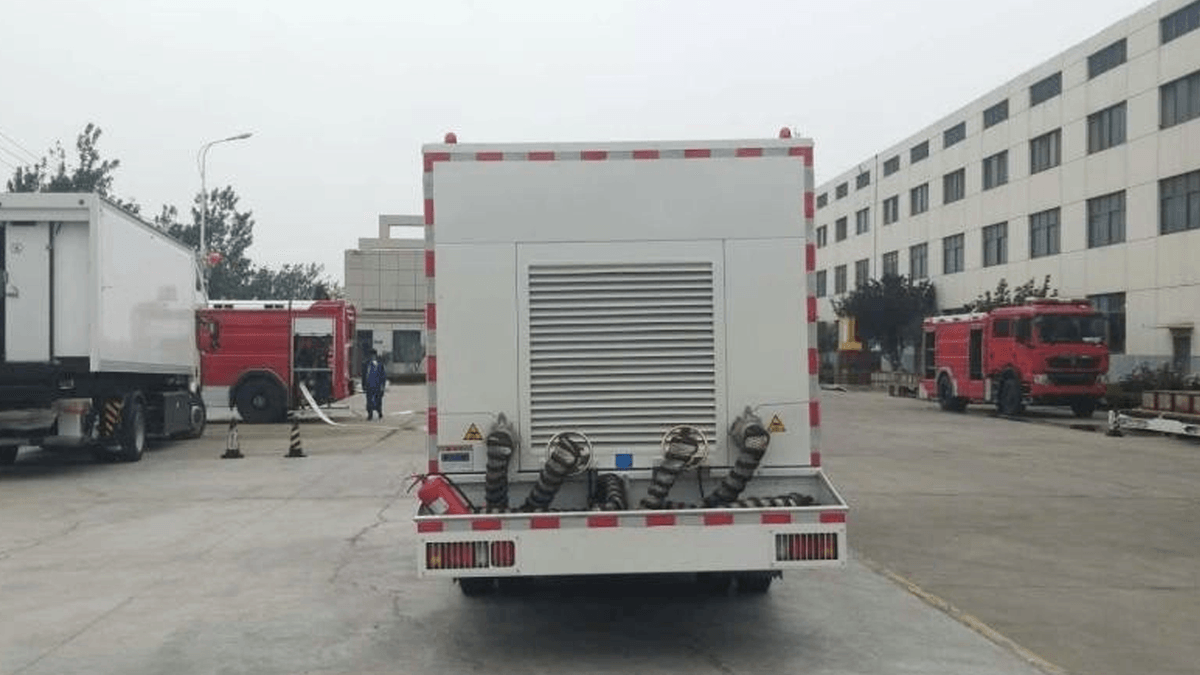
- Implement a comprehensive maintenance program: A well-designed maintenance program is essential for preventing equipment breakdowns and ensuring the reliability of the Air Source Truck. This includes regular inspections, filter replacement, compressor servicing, and tank testing, as outlined earlier. By staying on top of maintenance, operators can identify and address potential issues before they become major problems, reducing downtime and repair costs.
- Invest in training and certification: Ensuring that operators are properly trained and certified is key to overcoming the challenge of untrained personnel. Training programs should cover all aspects of Air Source Truck operation, including safety procedures, maintenance tasks, and regulatory compliance. Certification programs can help to ensure that operators have the necessary skills and knowledge to handle the equipment properly.
- Adopt technology for monitoring and control: Advanced technology can help to address the challenge of inconsistent air pressure and flow rate. Installing sensors and monitoring systems on the Air Source Truck allows operators to track pressure, flow rate, and other key parameters in real-time. This data can be used to identify issues quickly and make adjustments as needed, ensuring that the Air Source Truck is operating at peak performance. Some Air Source Trucks also feature automated control systems that can adjust pressure and flow rate automatically, reducing the risk of human error.
- Plan for environmental conditions: To address the challenges posed by extreme weather and environmental factors, operators should develop contingency plans for different conditions. This includes equipping Air Source Trucks with features such as insulation for cold weather, cooling systems for hot weather, and protective covers for dust and moisture. Operators should also monitor weather forecasts and adjust their operations accordingly, such as scheduling maintenance during mild weather or relocating Air Source Trucks to protected areas during storms.
- Stay informed about regulatory changes: To ensure compliance with regulations, operators should establish a system for tracking regulatory updates. This can include subscribing to industry publications, joining industry associations, and maintaining relationships with regulatory agencies. Working with manufacturers to understand how new regulations affect the Air Source Truck and what modifications or upgrades are needed can also help to ensure compliance.
- Optimize fleet management: Effective fleet management is essential for cost management and efficient operations. This includes analyzing usage data to determine the optimal number of Air Source Trucks needed, scheduling maintenance to minimize downtime, and optimizing routes to reduce fuel consumption. Using fleet management software can help to streamline these processes, providing real-time data on the location, status, and performance of each Air Source Truck.
- Consider alternative power sources: Investing in electric or hybrid Air Source Trucks can help to reduce operating costs, lower emissions, and comply with environmental regulations. While these units may have a higher initial cost, they can provide significant savings over time in terms of fuel and maintenance. Additionally, using renewable energy sources to charge electric Air Source Trucks can further reduce their environmental impact and operating costs.
Case Studies: Successful Air Source Truck Implementations
To illustrate the importance and effectiveness of Air Source Trucks in aircraft ground operations, let's look at some real-world case studies:
Case Study 1: Major International Airport
A major international airport with a high volume of flights was experiencing frequent delays due to unreliable air supply for aircraft engine starting. The airport's existing Air Source Trucks were aging and prone to breakdowns, leading to missed flight departures and increased operational costs. To address this, the airport invested in a fleet of new high-pressure air supply trucks with advanced monitoring systems and reliable compressors.
The new Air Source Trucks significantly improved the airport's ground operations. Engine starting times were reduced by 50%, and breakdowns decreased by 80%, resulting in fewer delays and improved on-time performance. The advanced monitoring systems allowed operators to detect and address issues before they caused problems, and the larger storage tanks enabled the Air Source Trucks to service multiple aircraft without refueling. The airport also reported lower maintenance costs due to the reliability of the new units, making the investment in new Air Source Trucks highly worthwhile.
Case Study 2: Regional Airline
A regional airline with a fleet of turboprop aircraft was struggling with the high cost of operating diesel-powered Air Source Trucks. The airline was also concerned about the environmental impact of the trucks, which emitted significant amounts of greenhouse gases. To address these issues, the airline replaced its diesel Air Source Trucks with electric air source trucks.
The switch to electric Air Source Trucks resulted in immediate benefits. Operating costs were reduced by 30% due to lower fuel and maintenance costs, and emissions were eliminated entirely. The electric trucks were also quieter, reducing noise pollution around the airport. The airline was able to charge the trucks using renewable energy sources, further enhancing their environmental benefits. The reliability of the electric Air Source Trucks was comparable to the diesel units, ensuring that the airline's ground operations continued to run smoothly.
Case Study 3: Military Air Base
A military air base required a reliable source of compressed air for a variety of aircraft, including fighter jets and transport planes. The base's existing Air Source Trucks were not able to meet the high pressure and flow rate requirements of the newer aircraft, leading to difficulties in engine starting and maintenance. The base invested in a fleet of specialized high-pressure air supply trucks designed for military applications.
The new Air Source Trucks were able to deliver the required air pressure and flow rate, enabling the base to service its newer aircraft efficiently. The trucks were also designed to withstand the harsh conditions of military operations, including extreme temperatures and rough terrain. The reliability of the new Air Source Trucks reduced downtime and improved the readiness of the base's aircraft, ensuring that they were able to respond quickly to missions. The advanced safety features of the trucks also enhanced the safety of ground crews, reducing the risk of accidents.
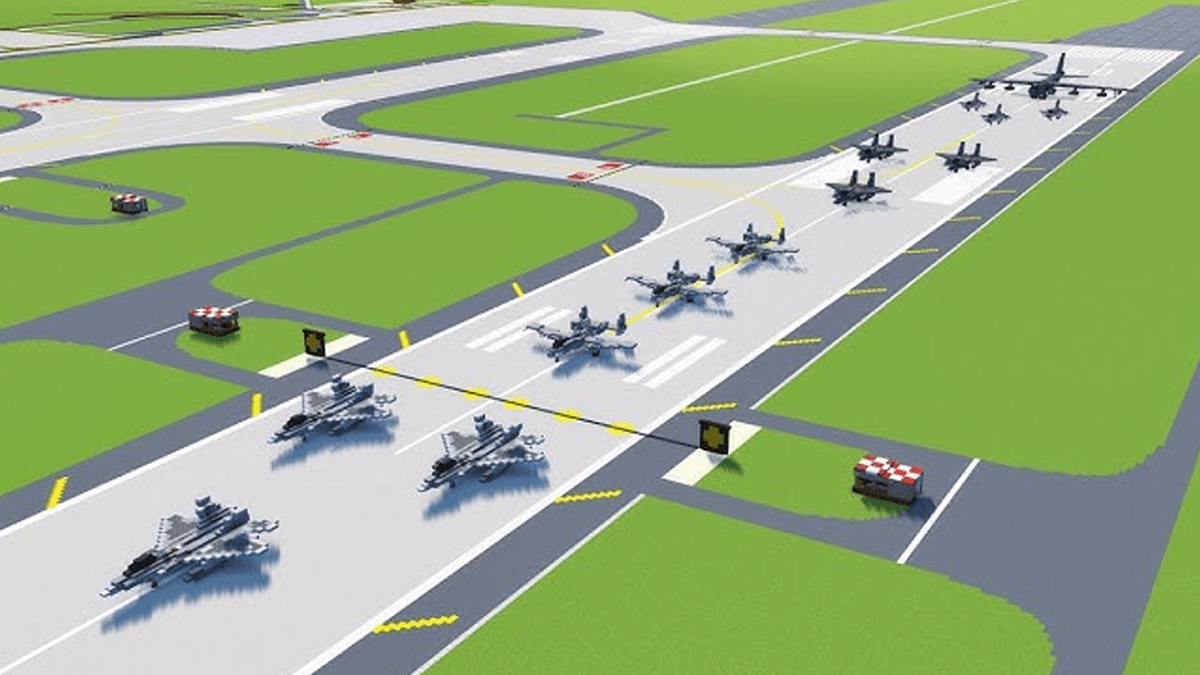
Future Trends in Air Source Truck Technology
The Air Source Truck industry is constantly evolving, with new technologies and innovations emerging to improve performance, efficiency, and sustainability. Here are some of the key trends that are shaping the future of Air Source Trucks:
- Electrification: As mentioned earlier, electric Air Source Trucks are becoming increasingly popular, and this trend is expected to continue. Advances in battery technology are making electric trucks more powerful and longer-lasting, allowing them to compete with diesel-powered units in terms of performance. Electric Air Source Trucks offer numerous benefits, including lower operating costs, zero emissions, and reduced noise, making them an attractive option for airports and airlines looking to improve sustainability.
- Smart technology integration: The integration of smart technologies, such as IoT sensors, artificial intelligence (AI), and cloud computing, is transforming Air Source Truck operations. IoT sensors can collect real-time data on the performance of the Air Source Truck, including pressure, flow rate, and engine status, which can be transmitted to a cloud-based platform for analysis. AI algorithms can use this data to predict maintenance needs, identify potential issues, and optimize performance. This allows operators to take a proactive approach to maintenance and ensure that the Air Source Truck is always operating at peak efficiency.
- Increased automation: Automation is another trend that is expected to impact Air Source Truck operations. Automated features such as self-docking, which allows the Air Source Truck to connect to the aircraft automatically, can reduce the need for human intervention and improve efficiency. Automated pressure and flow rate control systems can also ensure that the air supply is always within the required parameters, reducing the risk of human error. In the future, we may see fully autonomous Air Source Trucks that can navigate the airport tarmac, connect to aircraft, and perform their tasks without any human input.
- Improved energy efficiency: Manufacturers are constantly working to improve the energy efficiency of Air Source Trucks, regardless of their power source. This includes developing more efficient compressors, improving insulation to reduce heat loss, and optimizing the design of the trucks to reduce drag. These improvements not only reduce operating costs but also lower the environmental impact of the Air Source Truck.
- Modular design: Modular design is becoming more common in Air Source Trucks, allowing operators to customize the trucks to meet their specific needs. Modular components, such as compressors, storage tanks, and filters, can be easily replaced or upgraded, making it easier to maintain and update the Air Source Truck. This also allows operators to adapt the truck to changing requirements, such as new aircraft types or regulatory standards.
- Enhanced safety features: Safety will always be a top priority in aviation, and future Air Source Trucks will feature even more advanced safety features. This includes improved pressure relief valves, advanced fire suppression systems, and collision avoidance technology. Some Air Source Trucks may also be equipped with remote monitoring systems that allow operators to shut down the truck from a distance in the event of an emergency.
Choosing the Right Air Source Truck Manufacturer
Selecting the right manufacturer is just as important as choosing the right Air Source Truck. A reputable manufacturer can provide high-quality equipment, reliable support, and valuable expertise to help ensure the success of your operations. Here are some factors to consider when choosing an Air Source Truck manufacturer:
- Experience and reputation: Look for a manufacturer with a long history of producing Air Source Trucks for the aviation industry. A manufacturer with a proven track record is more likely to deliver reliable, high-quality equipment that meets the specific needs of aircraft ground operations. Check for customer reviews and testimonials to get an idea of the manufacturer's reputation.
- Product range and customization options: Choose a manufacturer that offers a wide range of Air Source Trucks to meet different needs and applications. This includes different sizes, power sources, and pressure ratings. The manufacturer should also be able to customize the Air Source Truck to meet your specific requirements, such as adding specialized features or modifying the design.
- Quality and reliability: The quality of the Air Source Truck is essential for ensuring reliable performance. Look for a manufacturer that uses high-quality materials and components, and that has strict quality control processes in place. Ask about the manufacturer's warranty and support policies, as this can give you an indication of their confidence in their products.
- Technical support and service: A good manufacturer should provide comprehensive technical support and service, including installation, training, and maintenance. They should have a team of qualified technicians available to assist with any issues that may arise, and should be able to provide prompt service to minimize downtime. Check for the availability of spare parts, as this is essential for keeping the Air Source Truck in good working order.
- Compliance with regulations: Ensure that the manufacturer's Air Source Trucks comply with all relevant regulations and standards, including those set by aviation authorities and environmental agencies. The manufacturer should be able to provide documentation proving compliance, and should stay up-to-date with changes in regulations to ensure that their products remain compliant.
- Innovation and research and development: Choose a manufacturer that is committed to innovation and research and development. This ensures that their Air Source Trucks incorporate the latest technologies and features, providing improved performance, efficiency, and safety. A manufacturer that invests in R&D is more likely to stay ahead of the competition and provide solutions that meet the evolving needs of the aviation industry.
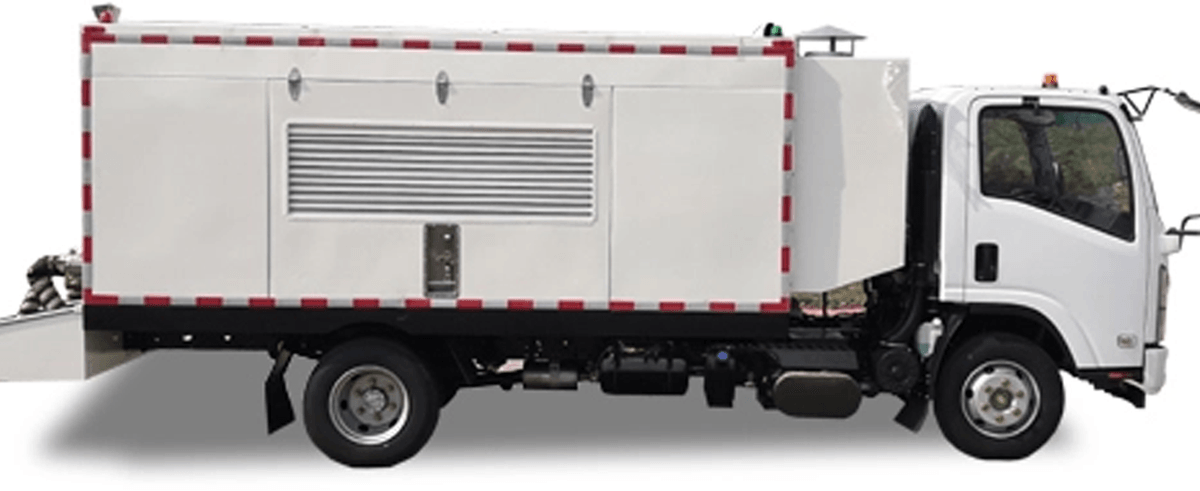
Conclusion: The Vital Role of Air Source Truck in Aviation
The Air Source Truck is an indispensable piece of equipment in aircraft ground operations, providing a reliable supply of compressed air for engine starting, environmental control systems, pneumatic system testing, and maintenance work. Its importance cannot be overstated, as it directly impacts the efficiency, safety, and cost-effectiveness of airport and airline operations.
From its design and components to its types and key features, the Air Source Truck is a specialized piece of equipment that is engineered to meet the strict requirements of the aviation industry. Proper maintenance, safety considerations, and operator training are essential for ensuring its reliable performance, while addressing common challenges such as equipment breakdowns, inconsistent air pressure, and regulatory compliance requires a proactive and strategic approach.
As technology continues to advance, the future of the Air Source Truck looks promising, with trends such as electrification, smart technology integration, and increased automation set to improve performance, efficiency, and sustainability. By choosing the right Air Source Truck and manufacturer, and implementing best practices for operation and maintenance, airports and airlines can ensure that their ground operations run smoothly, safely, and efficiently.
In conclusion, the Air Source Truck is a vital asset in the aviation industry, playing a critical role in ensuring that aircraft are ready for flight and that passengers and crew are safe and comfortable. Its continued evolution and improvement will be essential for meeting the growing demands of the aviation industry and ensuring a sustainable future for air travel.

